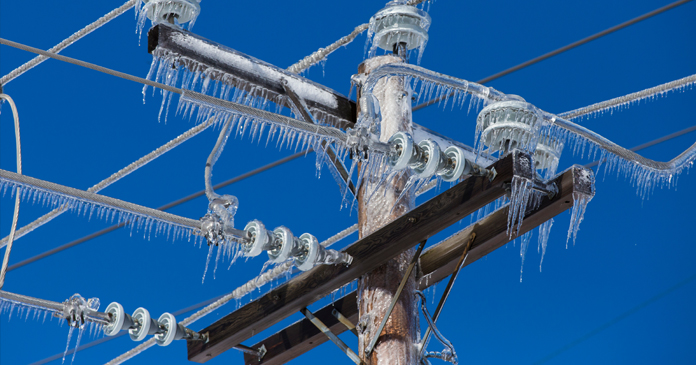
When there are existential threats to the freedoms the U.S. enjoys, Americans have proven they can mobilize to address them. At the start of World War II, the U.S. military was the 12th-largest in the world. By 1944, manufacturers were producing a “bomber an hour,” building almost 100,000 planes that year alone.
Some modern-day threats are less apparent than those the nation experienced 80 years ago, yet they have the potential to devastate considerable portions of the country if left unaddressed. Studies show the nation’s aging and balkanized electric grid is increasingly vulnerable and inadequate in the current threat environment.
In recent years, extreme weather, saboteurs and cyber attacks have threatened domestic energy infrastructure, the economy and American lives. And despite requirements for energy security and mission readiness, the military is not immune to these threats. More than 98 percent of Department of Defense installations are reliant on the civilian electric grid for power.
Extreme weather events are becoming more frequent and severe, with recent summer and winter weather forcing grid operators and utilities to conduct rolling outages. In fiscal year 2019, the DOD experienced 2,572 unplanned utility outages, of which 542 lasted eight hours or longer, including at installations with missions that cannot tolerate interruptions. Long-duration outages at installations with critical missions can cause a variety of severe impacts, the consequences of which extend into the public and private sectors.
During winter storm Uri in February 2021, every major DOD installation in Texas experienced some level of disruption to electricity, water or communications service, with 12 out of the 15 bases in the state losing power. Power outages ranged from hours to days in duration at DOD installations when gas pipelines failed, with multiple sites losing water service for more than a week due to a lack of power for the water treatment and pumping facilities. There simply was not enough available generation capacity in the state or connections to neighboring grid regions to deliver the needed power.
Physical attacks on the grid are also on the rise. In North Carolina, nearly 45,000 customers lost power after individuals shot up two power substations in late 2022, leaving many in the dark for days amid freezing temperatures. Additionally, the U.S. Government Accountability Office reported that “nations, criminal groups, terrorists, and others are increasingly capable of attacking the grid.”
America’s civil and military leadership simply cannot wait for the next disaster to strike. It’s time for U.S. leaders to come together and meet the moment.
Doing so requires a nationwide commitment to critical grid investments and reasonable policies that will strengthen the country’s interregional transmission system.
The U.S. Federal Energy Regulatory Commission is currently considering rules for planning new regional transmission that could have far-reaching benefits if recommendations from industry leaders are followed. But that rule alone is likely not enough.
The nation needs significantly more capacity connecting grid regions, according to a recent U.S. Department of Energy study.
Expanded interregional transmission lines would allow storm-ravaged areas to tap into their neighbors’ available power supply, helping reduce the likelihood of outages and mitigate spiking utility prices. An expanded system also provides greater resilience to physical attacks, offering alternative pathways for power to flow should an attack occur.
An additional gigawatt of transmission capacity between the Texas grid and Southeast could have saved nearly $1 billion and kept the heat on for an estimated 200,000 Texas homes during the 2021 winter storm. Unfortunately, these large infrastructure projects currently can take a decade to move through the nation’s burdensome regulatory processes. Absent a strong final rule from FERC and congressional action to streamline and facilitate permitting processes and incentivize greater private sector infrastructure investment, the U.S. will continue to build these critical projects at the current lackluster pace, despite the need for rapid acceleration.
Meanwhile, China has built 260 gigawatts of interregional transmission capacity in a seven-year period, and European nations have recently committed to 130 GW of advanced high-voltage lines over the next decade.
A failure of American leaders to step up and deliver the necessary changes will continue to put the nation’s energy security at risk and hurt the economy, given the tremendous benefits study after study has shown greater interregional transmission capacity affords consumers.
Faced with looming crises in the past, American policymakers and industry have teamed up to accomplish seemingly impossible feats. It’s once again time for the U.S. to rise to the challenge and ensure American energy security.














